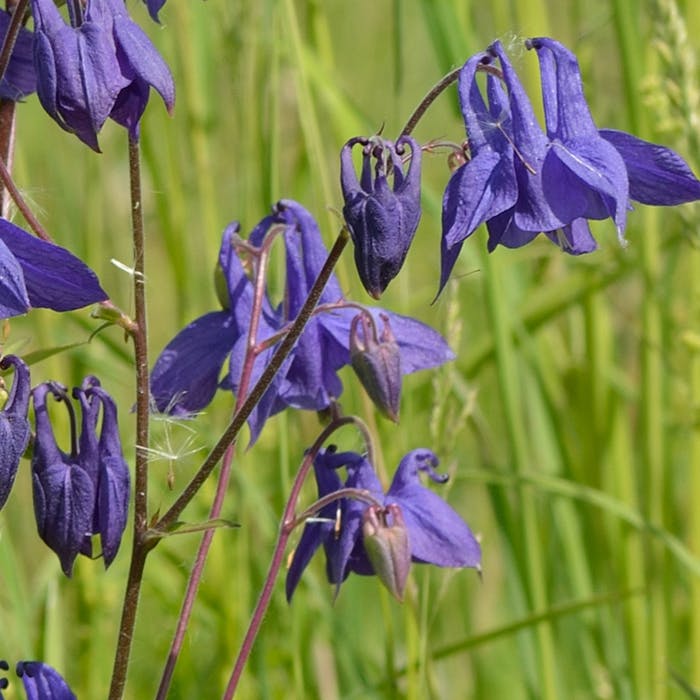
'Granny's Bonnet' - the original now much-copied Common Columbine
The Common Columbine is a British wildflower, now with a number of related variants, which may be more familiar to gardeners via its Latin name Aquilegia. Various cultivars of this pretty rich purple-blue wildflower are now available for domestic planting from garden centres, and often prominent at the Chelsea Flower Show.
The wild Common Columbine is actually a relatively uncommon, but widely distributed, native plant in Britain. It is a tall, branching plant with large, distinctive bonnet-shaped flowers, usually blue or violet-blue. Its leaves, by comparison are dull-green, comprising of three rounded leaflets on stalks. It flowers in May and June.
Nectar is secreted at the base of the long spur above each petal and is accessible only to long-tongued bumble bees.
The Columbine can be found throughout Britain, especially in the west and south of England and Wales. It prefers damp habitats including woodlands, grassland and fens on limey or chalky soils.
It is threatened by interbreeding with garden escapees, loss of damp habitats from drainage, and pollution from intensive agriculture.
The petals, when looked at from the base, are said to look like five doves sitting in a ring, and the name Columbine actually derives from 'columba' meaning 'dove'. As such, it was a popular choice to dress church carvings with.
Columbine is also sometimes called 'Granny's Nightcap' or 'Granny's Bonnet' because of its flowers' resemblance to little purple bonnets.
Further reading
Links to external websites are not maintained by Bite Sized Britain. They are provided to give users access to additional information. Bite Sized Britain is not responsible for the content of these external websites.
